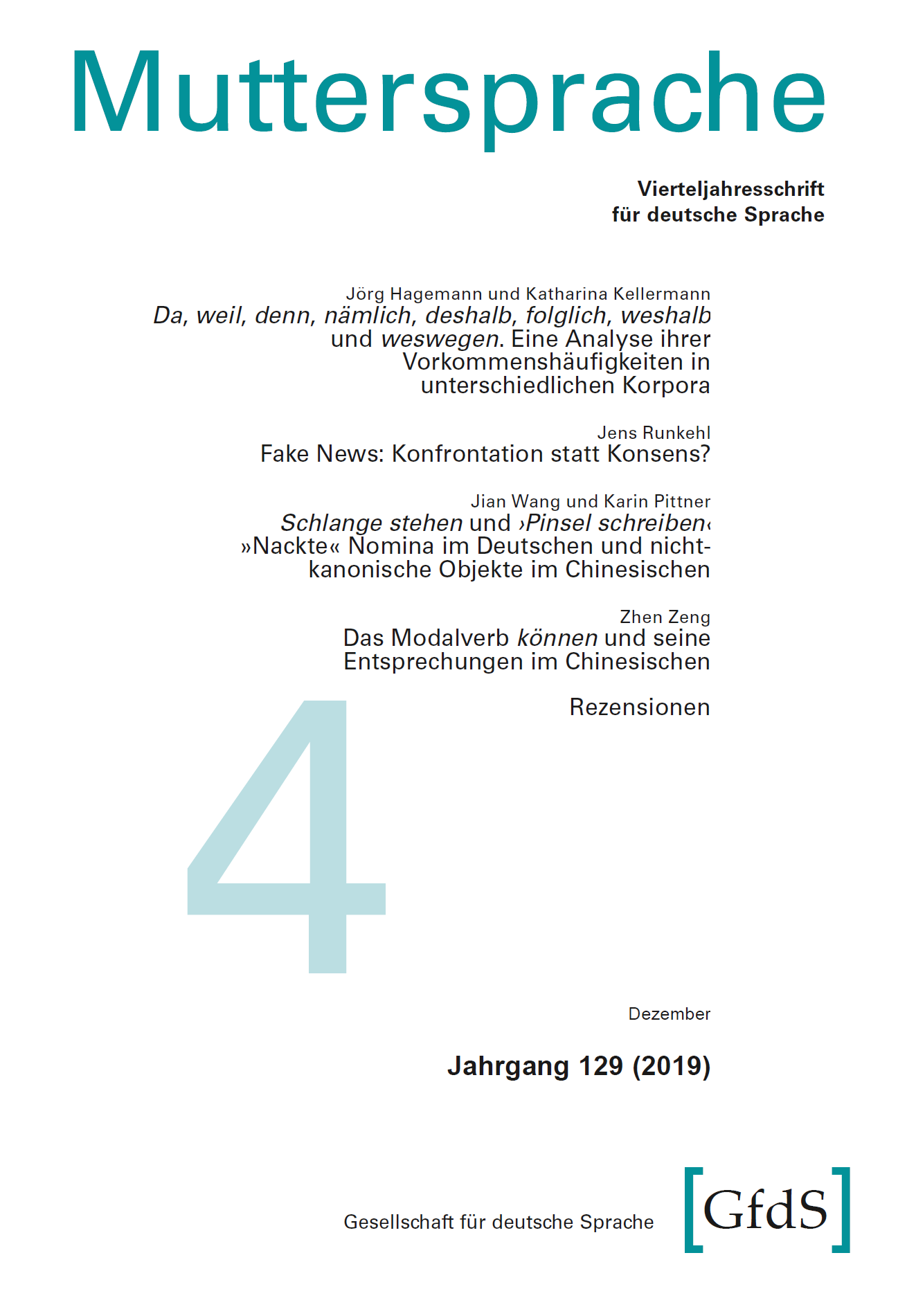Artikeldetails
Jens Runkehl: Fake News: Konfrontation statt Konsens? (MU)

Produkttyp: Beitrag (Zeitschrift)
Autor(in): Jens Runkehl
Titel: Fake News: Konfrontation statt Konsens?
Publikation in: Muttersprache, 129. Jahrgang, Heft 4
Seiten: 306–318 (13 Seiten)
Erschienen: 15.12.2019
Abstract: siehe unten

Preis: 4,90 € inkl. MwSt.
(Download)
Abstract
Fake News sind ein Phänomen, das politische Wahlen in demokratischen Gesellschaften mittlerweile erheblich beeinflusst hat. Ihr Erfolg speist sich insbesondere aus den Partizipationsbedingungen des Web 2.0, welches die klassische Massenkommunikation durch die Kommunikation der Massen abgelöst hat. Die multimodalen Möglichkeiten zur Nachrichtenverbreitung, wie auch die Beschleunigung von Kommunikation an sich, tragen zur rasanten Verbreitung von Fake News bei. Neben den spezifischen Produktionsbedingungen spielen bei Fake News jedoch auch deren Rezeptionsbedingungen, wie sie speziell in sozialen Netzwerken vorliegen, eine große Rolle für ihren Erfolg. Das Vorhandensein von Filterblasen oder die Abwendung von rationalen Diskursen begünstigen ihre schnelle und durchdringende Verbreitung erheblich. Der Beitrag gibt einen Überblick über beide Aspekte und versucht eine erste Einordnung dieses Phänomens.
Fake news is a phenomenon that has had a considerable influence on political elections in democratic societies. Their success is particularly due to the participation conditions of Web 2.0, which has replaced traditional mass communication through the communication of the masses. The multimodal possibilities for the distribution of news, as well as the acceleration of communication itself, contribute to the rapid spread of fake news. And in addition to the specific production conditions, the reception conditions of fake news, especially in social networks, also play a major role in its success. The existence of filter bubbles or the avoidance of rational discourses considerably promote their rapid and penetrating dissemination. The article gives an overview of both aspects and attempts an initial classification of this phenomenon.